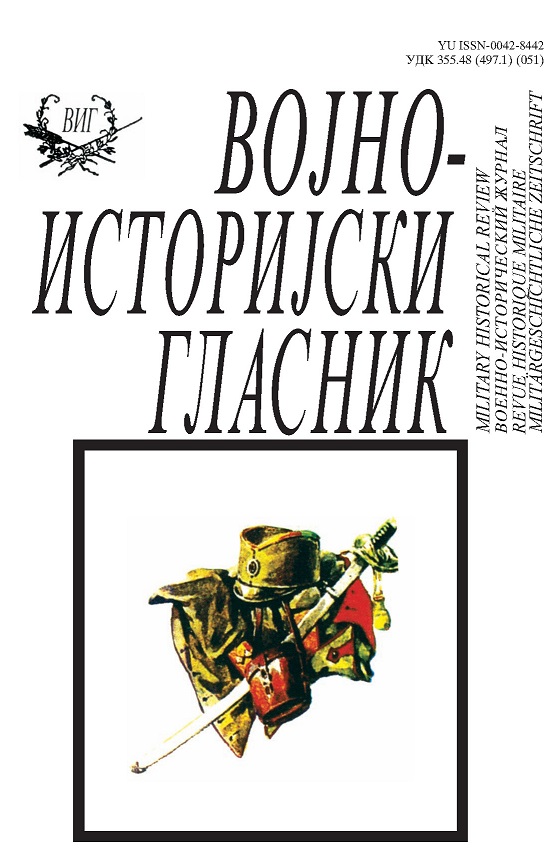Српске војске у ратовима у Европи и Малој Азији (XII–XIV век)
Serbian Armies in the Wars in Europe and Asia Minor (12th-14th Centuries)
Author(s): Aleksandar UzelacSubject(s): Military history, International relations/trade, 6th to 12th Centuries, 13th to 14th Centuries
Published by: Institut za strategijska istraživanja
Keywords: medieval Serbian army; Byzantium; Hungary; Bulgaria; Asia Minor; Mausoleum; mercenaries; cavalry; XII-XIV century;
Summary/Abstract: During the XII-XIV centuries, Serbian rulers frequently employed their armies in the conflicts beyond the borders of their state. As a consequence of ambitious foreign policies, vassal obligations or concluded alliances with Byzantium, Hungary or Bulgaria, they fought on the various battlefields from Central Europe to Asia Minor. The most notable examples are battles of Pelagonia (1259) and Kressenbrun (1260), expeditions undertaken against Turks in Thrace and Anatolia (1312, 1313) and military aid sent to Byzantium during the various stages of civil wars fought between Andronicus II and Andronicus III (1327), and between John V Paleologus and John VI Cantacuzenus (1342-43, 1352). Serbian armies also served mighty Tatar leader Nogai (1294-97) and after the battle of Velbazhd (1330), they provided armed support to friendly political faction in Bulgaria. The rulers exercised firm control over their military resources. These primarily consisted of domestic allodial and feudal nobility, but also of foreign oriental and western mercenaries. Although there is a distinction in the sources between these two groups, one may observe the tendency to organize a unified army, irrespective of its members’ origin. During this period, Serbian armies grew up in size; detachment that paricipated in the Battle of Pelagonia in 1259 amounted no more than 1000 lightly equipped riders, while expeditionary corps sent to Byzantium in 1352 consisted of no less than 4.000 cavalrymen. Although in the twelfth century infantry played the most important role in Serbian armament and tactics, during the thirteenth and fourteenth century cavalry gradually became dominant. Sources testify that Serbian armies who fought abroad mainly consisted of cavalry units. Much attention has been cast to horse breeding and several notices from the sources show that domestic nobility was abundant in riding animals. However, according to the eyewitness’ testimonies, their horses were small in stature and their fighting qualities were generally weaker than in the case of their western and byzantine counterparts. In the thirteenth and fourteenth centuries, presence of heavy mounted troops was probably limited only to western mercenary corpses and Serbian cavalry was predominantly light. Its character was determined by the quality of available horses, rather than arms and armor and important changes in this aspect took place only during the era of Ottoman conquests, when oriental horses were introduced in the Balkans in larger numbers.
Journal: Vojnoistorijski glasnik
- Issue Year: 2014
- Issue No: 1
- Page Range: 9-29
- Page Count: 21
- Language: Serbian

